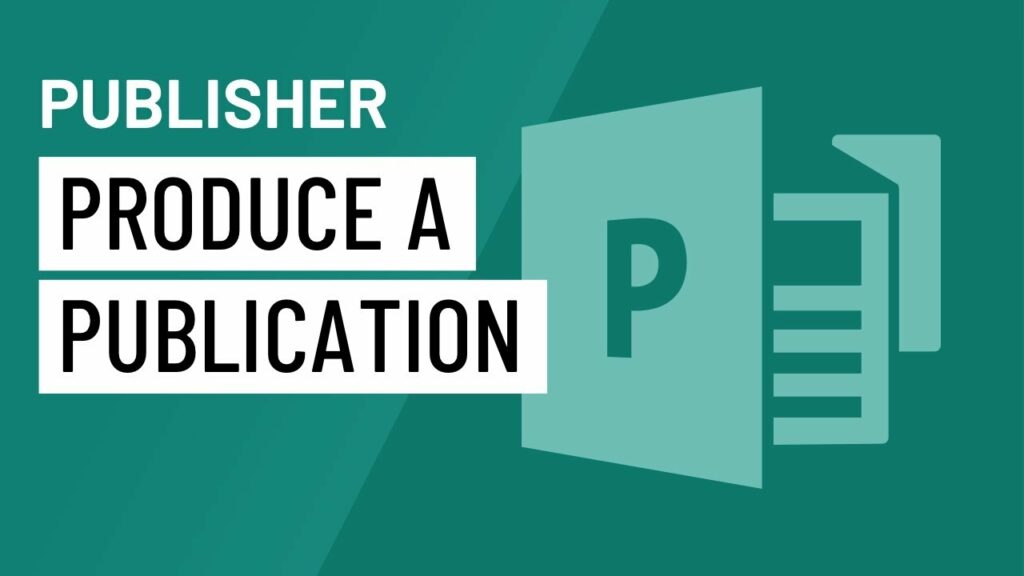Mastering Publication Production in Publisher 2010: A Comprehensive Guide

Introduction:
Microsoft Publisher 2010 is a powerful desktop publishing application that empowers users to create a wide range of publications, including flyers, brochures, newsletters, posters, and more. Producing a publication in Publisher 2010 requires a combination of creativity, design skills, and proficiency with the software’s tools and features. In this comprehensive guide, we explore every step of the publication production process in Publisher 2010, providing invaluable insights and strategies for creating professional-quality publications.
Section 1: Planning Your Publication
1.1 Define Your Objectives: Before diving into the production process, it’s essential to define the objectives of your publication. Determine the purpose, target audience, and desired outcomes of the publication. Whether it’s promoting an event, showcasing products, or sharing information, clarifying your objectives will guide the design and content creation process.
1.2 Gather Content: Gather all the content you’ll need for your publication, including text, images, logos, and graphics. If necessary, conduct research, interviews, or surveys to gather relevant information. Organize your content into sections or categories to streamline the design process and ensure coherence in your publication.
1.3 Set a Timeline: Establish a timeline for the production of your publication, including milestones for content creation, design, review, and finalization. Consider factors such as printing deadlines, distribution schedules, and any promotional activities associated with the publication. Setting a timeline will help you stay organized and ensure timely completion of your project.
Section 2: Designing Your Publication
2.1 Choose a Template: Publisher 2010 offers a variety of professionally designed templates for different types of publications. Browse through the template gallery and select a design that aligns with your objectives and aesthetic preferences. Templates provide a starting point for your design and can be customized to suit your specific needs.
2.2 Customize Layout and Structure: Once you’ve selected a template, customize the layout and structure of your publication to accommodate your content. Add, remove, or rearrange text boxes, image placeholders, and other design elements to create a visually appealing and well-organized layout. Pay attention to typography, spacing, and alignment to ensure readability and visual coherence.
2.3 Incorporate Visual Elements: Enhance your publication with visually compelling elements such as images, illustrations, and graphics. Insert high-quality images that complement your content and reinforce your message. Use shapes, icons, and decorative elements to add visual interest and create a dynamic layout. Balance text and images to maintain a harmonious design.
2.4 Branding and Consistency: Maintain consistency in your publication by incorporating branding elements such as logos, colors, and fonts. Ensure that your publication reflects your brand identity and communicates a cohesive message to your audience. Consistent branding helps establish credibility, build recognition, and strengthen brand loyalty.
Section 3: Refining and Finalizing Your Publication
3.1 Review and Edit: Review your publication carefully to identify any errors or inconsistencies in content, design, or formatting. Edit text for clarity, accuracy, and conciseness. Check images for resolution, quality, and relevance. Solicit feedback from colleagues, peers, or stakeholders to gain fresh perspectives and ensure the effectiveness of your publication.
3.2 Fine-Tune Design Elements: Fine-tune design elements such as colors, fonts, and layouts to enhance the visual impact of your publication. Experiment with different color schemes, typography treatments, and graphic styles to find the most effective combination. Pay attention to details such as spacing, alignment, and contrast to create a polished and professional design.
3.3 Proofreading: Proofread your publication thoroughly to catch any spelling, grammar, or typographical errors. Use spelling and grammar check tools to identify and correct mistakes. Double-check all text, headlines, captions, and call-to-action elements to ensure accuracy and consistency. Proofreading is essential for maintaining the credibility and professionalism of your publication.
3.4 Finalize and Save: Once you’re satisfied with the design and content of your publication, finalize the document and save it in the desired format. Save a copy of your publication in Publisher format for future editing and revisions. Export the publication to PDF or other compatible formats for printing, sharing, or online distribution.
Section 4: Printing and Distribution
4.1 Choose Printing Options: Consider your printing options based on factors such as quantity, quality, and budget. Decide whether to print your publication in-house using a desktop printer or outsource printing to a professional printing service. Choose the appropriate paper stock, finish, and printing method to achieve the desired result.
4.2 Prepare for Distribution: Plan your distribution strategy based on the intended audience and objectives of your publication. Determine how you’ll distribute physical copies, whether through direct mail, handouts, or distribution at events. Explore digital distribution options such as email, social media, websites, or online platforms to reach a wider audience.
4.3 Monitor and Evaluate: Monitor the performance and impact of your publication after distribution. Track metrics such as engagement, response rates, and conversion rates to assess the effectiveness of your publication. Gather feedback from recipients, stakeholders, or customers to identify areas for improvement and inform future publication efforts.
Conclusion:
Producing a publication in Publisher 2010 is a multifaceted process that requires careful planning, creative design, and meticulous execution. By following the steps outlined in this guide, you can create professional-quality publications that effectively communicate your message, engage your audience, and achieve your objectives. Whether you’re promoting a business, sharing information, or showcasing your creativity, Publisher 2010 provides the tools and capabilities to bring your vision to life. With dedication, attention to detail, and a creative mindset, you can produce publications that make a lasting impression and drive success in your endeavors.







